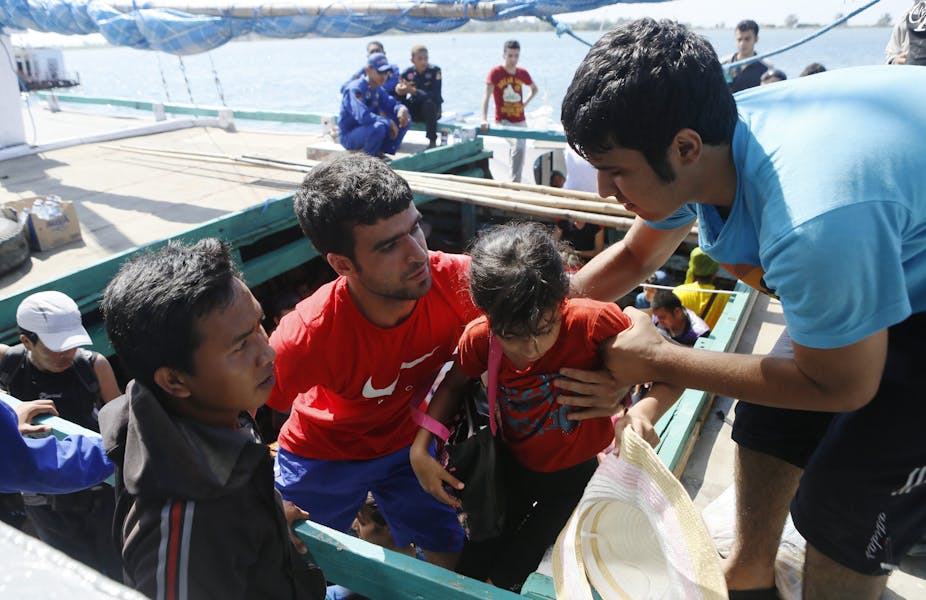The twists and turns of Australian immigration policy grew even more complicated yesterday with the passage of legislation in parliament to excise the mainland of Australia from the “migration zone”.
The migration zone is any place in Australia where a person arriving without a valid visa - what is technically called “without lawful authority” - can still make a valid visa application.
It is distinct from the territory of Australia and might best be understood as a legal boundary within which people arriving without valid visas can still fall under the remit of the Migration Act of 1958. Protections afforded by the Migration Act - in addition to being permitted to apply for asylum - include having asylum claims processed in Australia, rather than in a detention centre such as Manus Island or Nauru.
For example, the 66 Sri Lankans who arrived in Geraldton in April this year could apply for asylum and remain in Australia while their claims were being processed. This is because at that time, the place they arrived - in Western Australia - was part of the migration zone. If they arrived today their future would be rather different. Asylum seekers who currently land in Christmas Island, which is not in the migration zone, do not have their asylum claims processed in Australia.
To understand how we started tinkering with the boundaries of the migration zone, one must go back to 2001 and the so-called Tampa Affair. In August 2001, Captain Arne Rinnan rescued 433 asylum seekers from their sinking boat and sheltered them on his freighter, the MV Tampa. He then made the decision to head to Christmas Island (which was at the time still in Australia’s migration zone) for the safety of his vessel, the crew and the people he had rescued.
As a way to solve what then prime minister John Howard viewed as a direct challenge to border security in the aftermath of September 11 terrorist attacks, he proposed and had passed legislation that re-defined Christmas Island, Ashmore and Cartier Islands, Cocos (Keeling) Islands and Australian sea and resources installations as well as any other external territories, or state or territory islands, prescribed by regulations as “excised offshore places”. Importantly, this legislation was also retrospective.
With a stroke of the proverbial parliamentary pen, while the Tampa asylum seekers had reached Australian territory, they were no longer in the “migration zone” and were subsequently removed to offshore detention centres.
Later efforts to exclude mainland Australia from the migration zone have been unsuccessful. This was until 2012, when the Houston Panel on Asylum Seekers recommended that:
…the Migration Act 1958 be amended so that arrival anywhere on Australia by irregular maritime means will not provide individuals with a different lawful status than those who arrive in an excised offshore place.
In a curious twist, the chair of the Expert Panel on Asylum Seekers, retired Air Chief Marshal Angus Houston, was formerly Acting Chief of the Defence Force during the Tampa incident of 2001. He, along with the other two panellists - long time refugee advocate Paris Aristotle and Director of the National Security College at ANU, Michael L'Estrange - deemed that the standards should apply for all boat arrivals irrespective of whether they arrive on mainland Australia or not.
Rather than question the deterrent-centred model we have towards asylum seekers, Australia has furthered its expensive model of out-sourcing regional processing for asylum-seekers to countries such as Nauru and Papua New Guinea.
We could have learnt from the Tampa affair that reactive legislation to solve an immediate political problem does not lead to long-term sustainable solutions for asylum seekers seeking protection. Denying asylum seekers access to human rights bodies and the media sends a poor message to other countries in the region, as does refusing to accept and process onshore our modest share of the world’s asylum seekers.
Excluding the mainland from the migration zone marks another low in Australia’s immigration policy and is yet another example of a flawed “out of mind, out of sight” approach towards asylum seekers.

